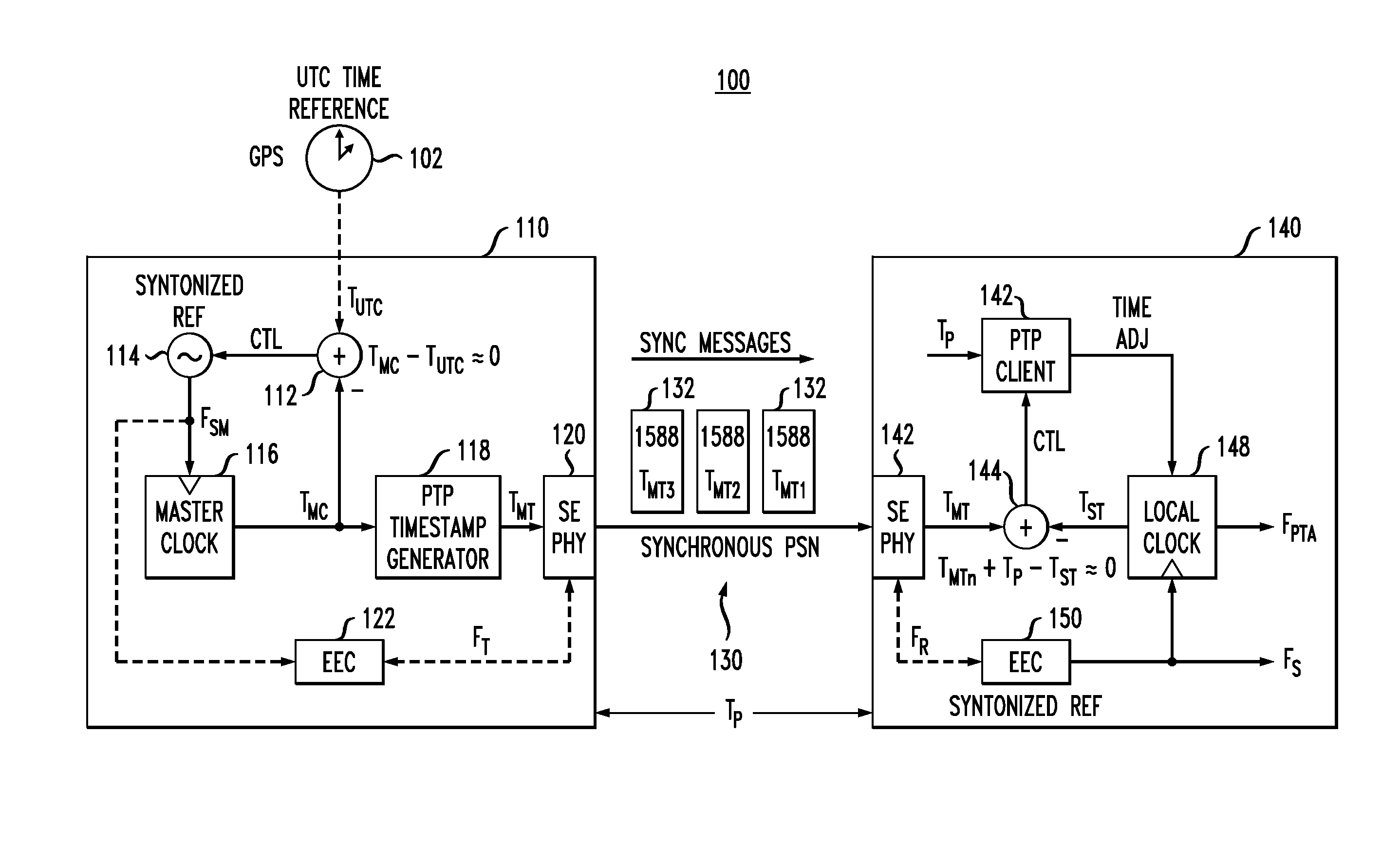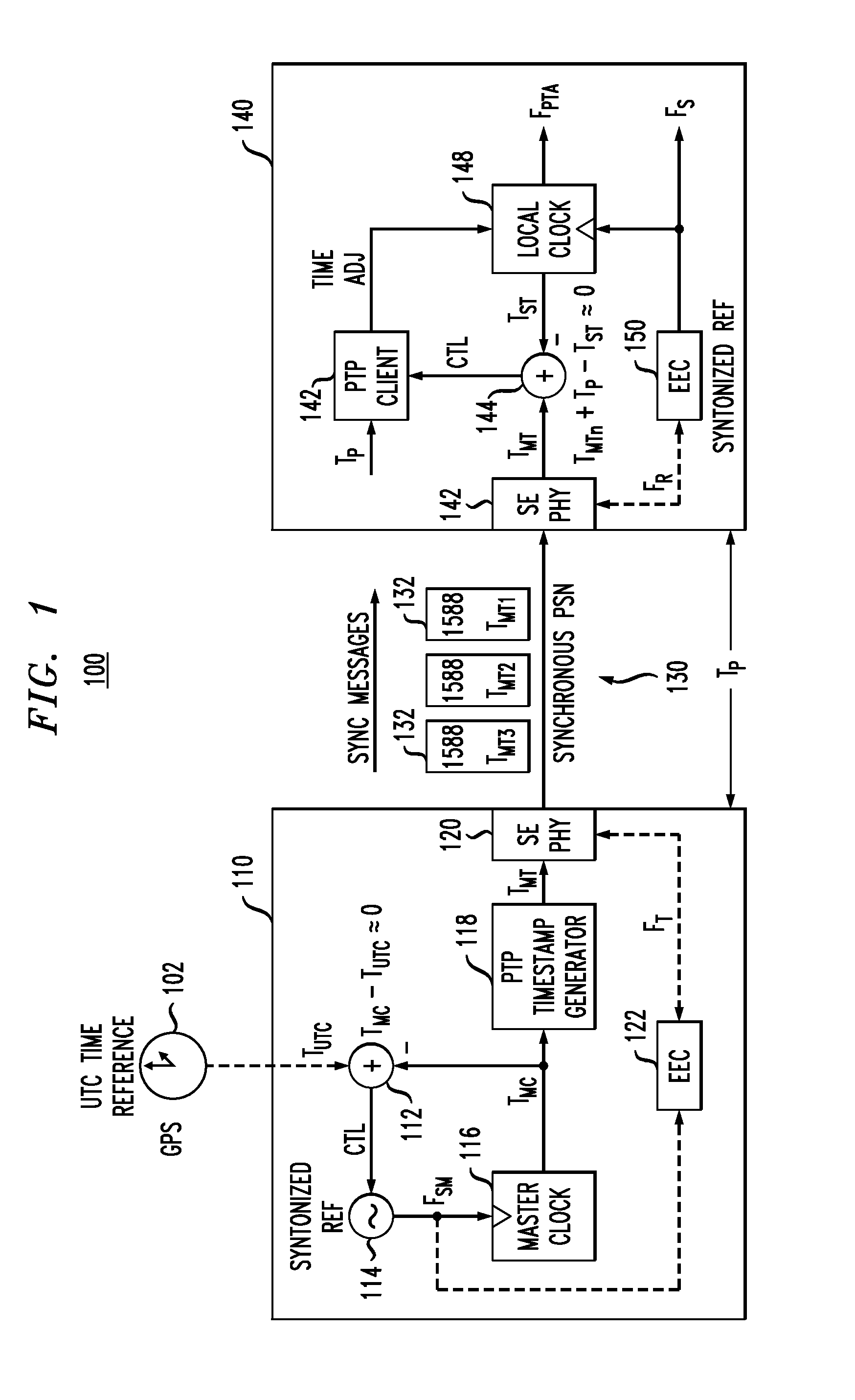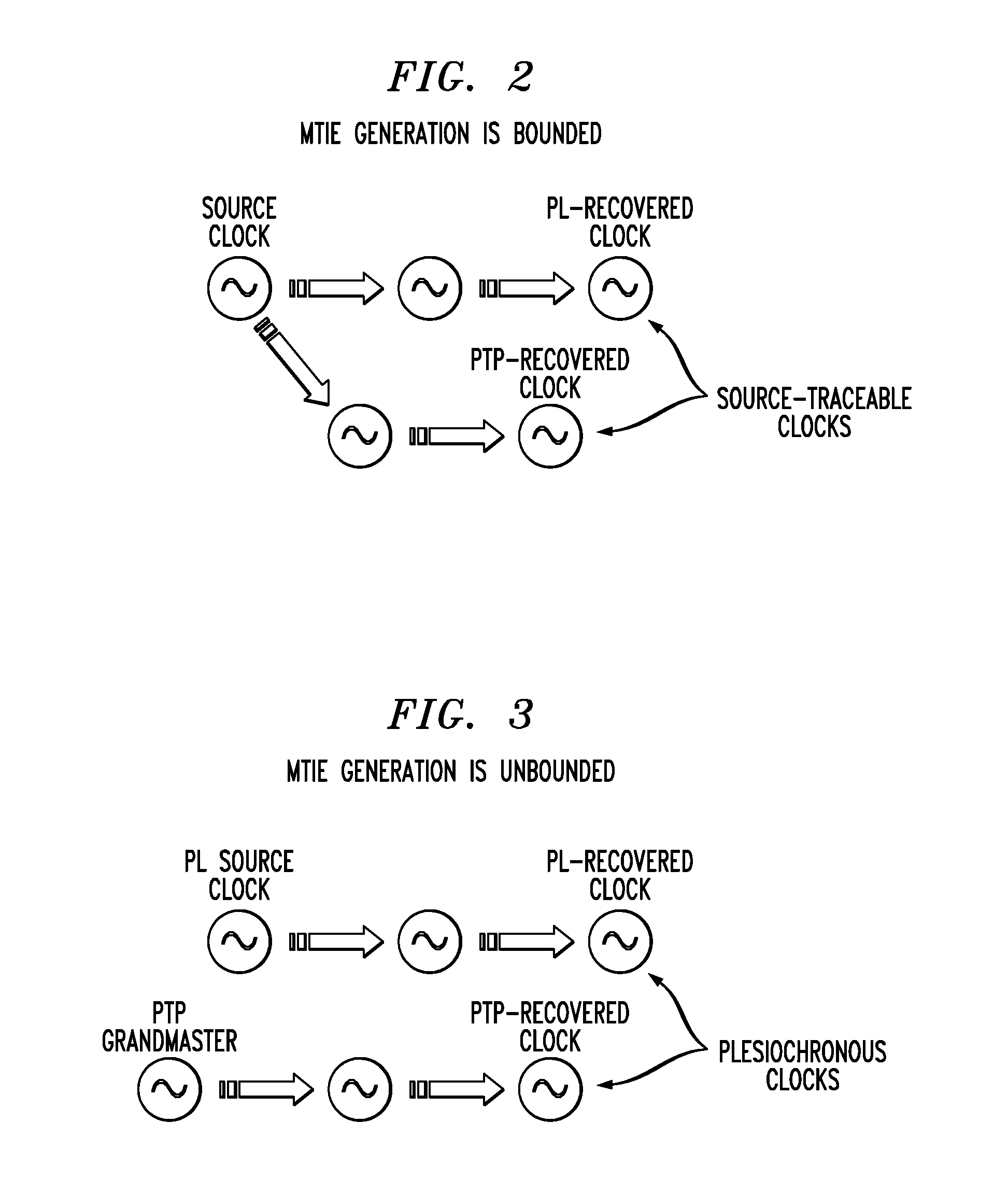Time Synchronization Using Packet-Layer and Physical-Layer Protocols
a packet-layer and physical-layer technology, applied in the field of packet networks, can solve the problems of limitations and costs of packet-layer protocols
- Summary
- Abstract
- Description
- Claims
- Application Information
AI Technical Summary
Benefits of technology
Problems solved by technology
Method used
Image
Examples
Embodiment Construction
[0020]IEEE1588 Mode
[0021]The IEEE1588-2008 standard (“IEEE Standard for a Precision Clock Synchronization Protocol for Networked Measurement and Control Systems”) has been proposed as a method for both synchronizing and syntonizing wireless base stations over packet-based networks. In the case of time division duplex (TDD) node B systems, time synchronization has been proposed as a way to achieve an operational phase-alignment tolerance of ±1.25 μs relative to UTC (Coordinated Universal Time) as required by the application. For this case, the IEEE1588 Precision Timing Protocol (PTP) is optioned in the two-way mode of operation, where the total propagation delay between the PTP master and the PTP slave can be measured and used to compensate received timestamps.
[0022]Although the IEEE1588 standard is a very well-documented protocol, performance aspects relating to its use or its ability to perform deterministically in real-world packet networks are not part of the standard. Due to the...
PUM
 Login to View More
Login to View More Abstract
Description
Claims
Application Information
 Login to View More
Login to View More - R&D
- Intellectual Property
- Life Sciences
- Materials
- Tech Scout
- Unparalleled Data Quality
- Higher Quality Content
- 60% Fewer Hallucinations
Browse by: Latest US Patents, China's latest patents, Technical Efficacy Thesaurus, Application Domain, Technology Topic, Popular Technical Reports.
© 2025 PatSnap. All rights reserved.Legal|Privacy policy|Modern Slavery Act Transparency Statement|Sitemap|About US| Contact US: help@patsnap.com



